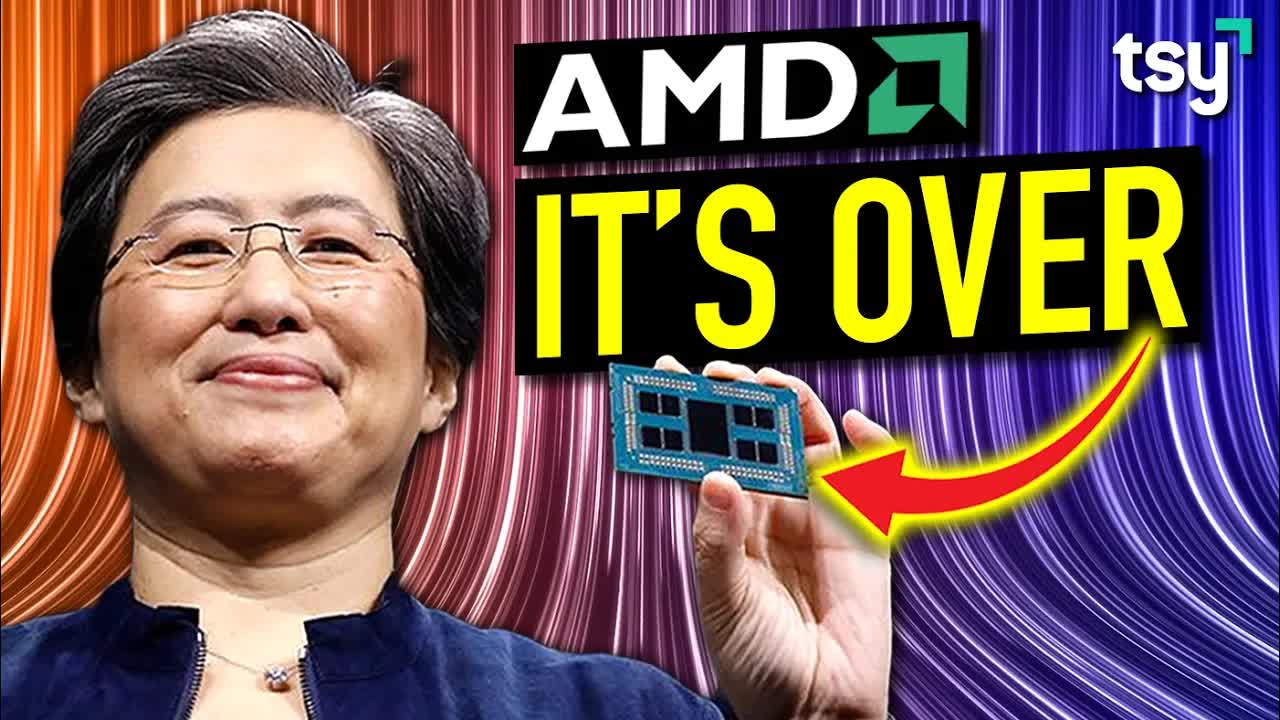AMD vs. NVDA: A Reevaluation After AMD's 36% Decline
Saturday, Nov 16, 2024 9:33 am ET
The semiconductor industry has been a hotbed of activity in recent years, with two prominent players, AMD and NVIDIA (NVDA), capturing investors' attention. After a significant decline in AMD's stock price, investors may be wondering if AMD stock has finally become a better investment than NVDA stock. Let's analyze the recent performance, valuations, and growth prospects of both companies to determine if AMD's decline presents an attractive entry point.
AMD's stock price has fallen by 36% from its peak, while NVDA's stock price has increased by 183.59% over the past year. This disparity in performance raises the question of whether AMD's recent decline makes it a more attractive investment than NVDA.
In terms of market capitalization, AMD is valued at $247.48B, while NVDA is valued at $3.42T, indicating a significant disparity between the two companies. Despite AMD's lower market capitalization, its recent decline may present an opportunity for investors.
AMD and NVDA have distinct product portfolios and target markets, which influence their financial performance. AMD focuses on data center, embedded, gaming, and PC markets, while NVDA targets gaming, professional visualization, data center, and automotive markets. Both companies have tapped into the AI craze, but NVIDIA has been more successful, with its stock up over 200% year-to-date and over 100% in the last 12 months. AMD, however, is up only 64% year-to-date, flipping its one-year return back into the green at 24%.
AMD's earnings growth rate has been impressive, with a 3-year average of 42% compared to NVDA's 24%. However, NVDA's profit margin is higher at 28% vs. AMD's 14%. AMD's growth is driven by its expanding data center and gaming segments, while NVDA's strength comes from its dominant position in AI and data center markets.
Analyzing the recent decline in AMD stock, which has fallen 36% from its peak, raises the question: is AMD stock finally better than NVDA stock? To answer this, let's compare their valuations and potential growth catalysts.
Firstly, consider the price-to-earnings (P/E) ratio, a common valuation metric. As of October 25, 2024, AMD's P/E ratio stood at 179.89, while NVDA's was 65.22. This suggests that NVDA is relatively undervalued compared to AMD.
Next, let's examine the price-to-sales (P/S) ratio, which can be useful when comparing companies with different profit margins. AMD's P/S ratio was 7.8, while NVDA's was 34.4. Again, NVDA appears more attractively valued.
Now, let's explore potential growth catalysts for each company. AMD has been expanding its presence in the data center market, with record revenue in the third quarter of 2024. Additionally, AMD's entry into the AI market with its Instinct MI300X accelerators could drive future growth. However, AMD's gaming segment revenue has been declining, which may impact its overall performance.
On the other hand, NVDA has been dominant in the AI market with its A100 and H100 GPUs. NVDA's strong position in AI and its leadership in the gaming market make it a formidable competitor. Moreover, NVDA's data center segment has been growing, driven by demand for its A100 GPUs.
In conclusion, while AMD's recent decline may make it seem more attractive, NVDA's lower valuations and strong positions in AI and gaming make it a more compelling investment at this time. However, AMD's entry into the AI market and growth in the data center segment could change this dynamic in the future. Investors should closely monitor both companies' earnings and market developments to make informed decisions.
AMD's stock price has fallen by 36% from its peak, while NVDA's stock price has increased by 183.59% over the past year. This disparity in performance raises the question of whether AMD's recent decline makes it a more attractive investment than NVDA.
AMD Market Cap
In terms of market capitalization, AMD is valued at $247.48B, while NVDA is valued at $3.42T, indicating a significant disparity between the two companies. Despite AMD's lower market capitalization, its recent decline may present an opportunity for investors.
AMD and NVDA have distinct product portfolios and target markets, which influence their financial performance. AMD focuses on data center, embedded, gaming, and PC markets, while NVDA targets gaming, professional visualization, data center, and automotive markets. Both companies have tapped into the AI craze, but NVIDIA has been more successful, with its stock up over 200% year-to-date and over 100% in the last 12 months. AMD, however, is up only 64% year-to-date, flipping its one-year return back into the green at 24%.
AMD Diluted EPS YoY, Diluted EPS
AMD's earnings growth rate has been impressive, with a 3-year average of 42% compared to NVDA's 24%. However, NVDA's profit margin is higher at 28% vs. AMD's 14%. AMD's growth is driven by its expanding data center and gaming segments, while NVDA's strength comes from its dominant position in AI and data center markets.
Analyzing the recent decline in AMD stock, which has fallen 36% from its peak, raises the question: is AMD stock finally better than NVDA stock? To answer this, let's compare their valuations and potential growth catalysts.
Firstly, consider the price-to-earnings (P/E) ratio, a common valuation metric. As of October 25, 2024, AMD's P/E ratio stood at 179.89, while NVDA's was 65.22. This suggests that NVDA is relatively undervalued compared to AMD.
Next, let's examine the price-to-sales (P/S) ratio, which can be useful when comparing companies with different profit margins. AMD's P/S ratio was 7.8, while NVDA's was 34.4. Again, NVDA appears more attractively valued.
Now, let's explore potential growth catalysts for each company. AMD has been expanding its presence in the data center market, with record revenue in the third quarter of 2024. Additionally, AMD's entry into the AI market with its Instinct MI300X accelerators could drive future growth. However, AMD's gaming segment revenue has been declining, which may impact its overall performance.
On the other hand, NVDA has been dominant in the AI market with its A100 and H100 GPUs. NVDA's strong position in AI and its leadership in the gaming market make it a formidable competitor. Moreover, NVDA's data center segment has been growing, driven by demand for its A100 GPUs.
In conclusion, while AMD's recent decline may make it seem more attractive, NVDA's lower valuations and strong positions in AI and gaming make it a more compelling investment at this time. However, AMD's entry into the AI market and growth in the data center segment could change this dynamic in the future. Investors should closely monitor both companies' earnings and market developments to make informed decisions.


_cbf086401749733332056.jpeg)






